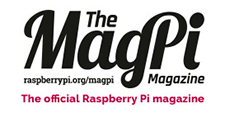RASPBERRY SHAKE NEWS
Featured News
Wellington home detector shows promise in earthquake early detection testing
“It’s a cute name for a little device engaged in serious research ‒ Raspberry Shake seismometers have been used in homes across Wellington to supplement information about earthquakes.
And the little devices have the potential to act as an earthquake early warning system if there are enough of them in use.”
Cave mapping with Raspberry Shake
“Exploring the caves involves following taut lines of string with knots every ten feet to mark the way, just like Theseus in the Greek myth. Richard mentions the trust and focus needed to accurately read a compass and count out distances travelled ten feet at a time based on how many knots you’ve passed. Visibility and human physical resilience are all factors too — if you’re exhausted from a lengthy dive, you probably aren’t noticing arrows or counting knots accurately. “It’s milk of magnesia down there when the bubbles hit the ceiling.“
Tens of thousands of dancing fans at Taylor Swift’s Dublin Eras Tour gigs could trigger ‘seismic activity’
“Dancing by tens of thousands of Taylor Swift fans in Dublin this weekend could potentially lead to seismic activity being registered like at some of her previous Eras Tour shows, a researcher has said. Last weekend, the British Geological Survey (BGS) said that 73,000 fans at Swift’s show in Murrayfield in Scotland led to earthquake monitors 3.7 miles away registering seismic activity.”

Small Donegal earthquake confirmed by officials
“Officials have confirmed a small tremor took place in County Donegal after a teacher recorded seismic activity on his school’s equipment. Brendan O’Donoghue teaches physics at St Columba’s College, which is part of the worldwide Seismology in Schools project.”

New Programme Encourages People to Get Involved in Monitoring Earthquakes
“Seismology is the study of earthquakes and seismic waves that move through and around the Earth. This new outreach programme is calling on people of all ages across Ireland to get involved in observing and studying local and global earthquakes – helping them to develop a better understanding of what lies beneath the Earth’s surface.“

Watch the earth move with Raspberry Shake
“Raspberry Shake was created on the slopes of Volcán Barú in Panama, thanks in large part to the support of seismology geeks on Kickstarter. The aim was to sell around 20 Raspberry Pi-powered devices to people they knew in the industry, but within a few days of the funding campaign’s launch, hundreds of Raspberry Pi enthusiasts and people wanting to detect earthquakes from home had jumped on board.”

Nanook Noise Rumbles Fairbanks
“Let’s make some NOOOOOOISE!” the announcer called to the crowd. The Alaska Earthquake Center was one of the stars of Friday’s “Research at the Rink” Nanook Hockey game at the Carlson Center, for the first demonstration in Alaska that seismometers can register the activity of a stadium full of fans.”

Home seismometers provide crucial data on Haiti’s quake
“A network of inexpensive seismometers, installed in people’s living rooms, gardens and workplaces across Haiti, is helping scientists to unravel the inner workings of the magnitude-7.2 earthquake that devastated the southwestern part of the Caribbean nation this month.”

College students shine in CRISiSLab Challenge 2021
“The competition challenged students to actively work with a ground motion detection sensor called Raspberry Shake. Through the ten-week challenge, the students worked with data captured by their sensors and used the data to create alerts upon reaching certain thresholds. “

Trayendo la Educación Sobre Terremotos a las Escuelas de Nepal
“La primera tarea fue seleccionar el mejor sismógrafo para el proyecto. Necesitaban un modelo de bajo costo, que requiriera poco mantenimiento y fácil de usar, que al mismo tiempo permitiera recolectar datos útiles de sismos para la red.”

Citizen Science At Heart Of New Study Showing COVID-19 Seismic Noise Reduction
“Research published in the journal Science, using a mix of professional and Raspberry Shake citizen seismic data, finds that lockdown measures to slow the spread of the virus COVID-19 reduced seismic noise by 50% worldwide.”

Earthquake Sensors Record Unprecedented Drop In Human Activity Due To Pandemic
“The shutdown effect registered by seismometers is akin to that typically seen in the middle of the night and during holiday periods, only this one lasted from March to May and encompassed almost every corner of the planet “

COVID-19 lockdown caused 50% global reduction in human-linked Earth vibrations
“Citizen-owned seismometers, which tend to measure more localised noise, noted large drops around universities and schools around Cornwall, UK and Boston, U.S.—a drop in noise 20 percent larger than seen during school holidays.”

Corona-Sperren bringen seismische Ruhe auf der Erde – und Forschern neue Daten
“40 Prozent der Daten aber lieferten Raspberry Shakes – persönliche Seismographen, die von Amateuren gebaut und genutzt werden. Hinzu kamen anonymisierte Mobilitätsdaten von Google und Apple, mit denen menschliche Bewegungen erkannt wurden. “

The coronavirus-induced anthropause is now visible in seismic vibrations
“…even using some citizen seismometer stations such as Raspberry Shakes. Technology such as the Raspberry Pi (a credit-card sized computer, which the Raspberry Shake is also based on) has opened up a new world of scientific projects, including seismic research.”

COVID-19 Lockdown Caused 50% Global Reduction In Human-Linked Earth Vibrations
“Citizen-owned seismometers, which tend to measure more localised noise, noted large drops around universities and schools around Cornwall, UK and Boston, USA – a drop in noise 20 per cent larger than seen during school holidays.

MBARI engineers develop a new low-cost way to connect deep-sea instruments
“Hoping to attract new users to MBARI’s MARS undersea observatory, MBARI engineers Craig Dawe and David French recently developed a wireless device called Deep-Sea Connect, a relatively inexpensive system for supplying data and power to instruments in the deep sea.”

NASA scientist tells plans to conduct potentially ground-breaking research using a Raspberry Pi seismometer and a mini rover
“In the summer of 2018, engineers at NASA’s Jet Propulsion Laboratory built a mini planetary rover with the aim of letting students, hobbyists, and enthusiasts create one for themselves.”

How to improve rapid public earthquake information? Listen to eyewitnesses!
“I set the area of interest, and then tried to adjust the magnitude threshold. Either the threshold was too high and I did not get information for the earthquakes that I felt, or it was too low and I got tens of notifications a day for earthquakes that nobody noticed. I deleted all earthquakes apps.”

Rapid City Museum Adds Interactive Exhibit That Measures Movement In Real-Time
“The museum is installing a hand-sized seismometer box called Raspberry Shake, which will be at the center of a new interactive exhibit allowing guests to jump up and down on the floor and see the seismic waves they create in real-time on a monitor.”

































































